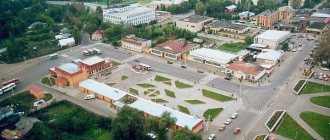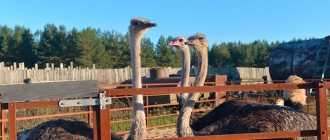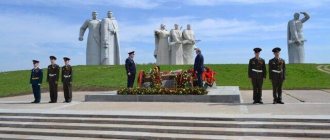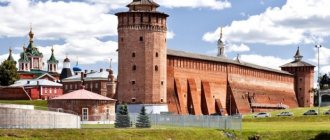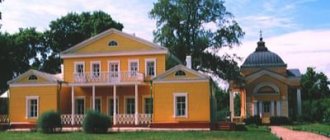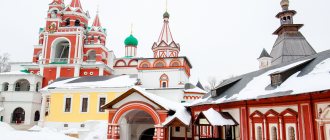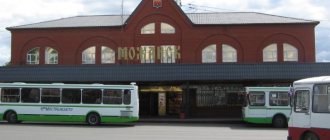The Moscow region is famous not only for its rich history, but also for its many attractions. This region is one of the leaders in the number of architectural monuments in Russia.
Most of these monuments are estates. In the Moscow region there are more than a hundred estates and estates of different times and styles. Many of them were the family nests of famous writers, poets and other cultural figures.
Below you can read about the most interesting, unusual and simply beautiful estates in the Moscow region.
Of course, it is impossible to tell everything interesting about any attraction in a couple of paragraphs. Choose from hundreds of excursions around Moscow and book a personal guide if you want to learn more about the capital and its surroundings.
- If you are also interested in Moscow estate museums, we have a separate guide to them on our website.
- What other interesting things can you see in the Moscow region, besides estates? Guide to cities, museums, monasteries and factories.
Abramtsevo Estate
Address: Abramtsevo, st. Museum, 1 Phone: , 8-916-278-45-42, (495) 993-00-33, Website: https://www.abramtsevo.net/ Opening hours: Museums from 10:00 to 18:00, to 20:00 on Saturday, park - from 10:00 to 20:00, until 21:00 on Saturday (Monday, Tuesday - days off, the last Thursday of each month - sanitary day) Cost: Main manor house - 300 rubles. (150 rubles for persons under 16), other exhibitions - 400 rubles, photography in the park - 200 rubles How to get there from Moscow: By train from Yaroslavsky station to Abramtsevo station, then walk through the forest to the museum.
Like many estates in the Moscow region, this estate began to be actively developed in the second half of the 18th century. Then the owner here was F.I. Golovin. The main house was also built under him (one of the few surviving wooden mansions in the region). Later, Abramtsevo came into the possession of Sergei Aksakov, who organized a “creative base” here for many artists and writers (Gogol, for example, visited Abramtsevo so often that he was even awarded his own room).
Aksakov loved the estate, here he was inspired and wrote the famous “Scarlet Flower”. Subsequently, Abramtsevo was acquired by philanthropist Savva Mamontov, who continued Aksakov’s work. Creative people still gathered at the estate, evenings and meetings were held.
Nowadays Abramtsevo is the territory of the museum-reserve of the same name. Here you can visit several exhibitions: in the mansion, in the workshop, in the kitchen. The themes of the exhibitions are, one way or another, related to art: sculpture, ceramics, painting, photography.
An interesting object is a ceramic bench painted with patterns. It bears the name of Vrubel (the artist personally decorated it). Every Sunday the museum hosts themed days for children, during which master classes and exhibitions, game and educational programs are held.
A story about the Abramtsevo estate from Reutov Television
Kuskovo Estate
Place on the map
Why is it interesting? The estate of Counts Sheremetyev was one of the first country residences in Russia. It includes the XVIII palace in the classicist style, the Italian and Dutch houses, as well as the Grotto and Hermitage pavilions. In 1918, Kuskovo received the status of an estate museum, and collections of porcelain, ceramics and glass from the State Museum of Ceramics were added to the museum’s exhibition. In 2017-2019, the estate underwent a large-scale restoration, during which the appearance of the monument was restored.
What to see? In addition to its unique architecture, Kuskovo is famous for its collection of ceramics. It is considered one of the largest in the world - the fact is that in 1932 the State Museum of Ceramics moved here. In addition, the ensemble is surrounded by an impressive forest park: you can go deeper into the forest and get lost in nature without even leaving the Moscow Ring Road.
How to get there? The estate is located in Moscow, on the territory of the Kuskovsky Forest Park. It can be reached by train from the Kursky railway station (Kuskovo station) or by bus 409 from the Vykhino metro station. The journey from the center will take about an hour.
What is the price? 50 rubles - entrance ticket to the territory, 250 rubles - ticket to the palace, 150 rubles - entrance to the Grotto. More information about prices is on the website.
Kuskovo Estate
Estate Semenovskoe-Otrada
Address: Stupinsky district, Semenovskoye Opening hours: Daylight hours Cost: Admission is free (security may require payment for entry)
In the village of Semenovskoye there is a recreation center for FSB officers, while the estate itself is abandoned and is almost not being restored. However, this does not prevent the Otrada estate from being considered one of the largest in the Moscow region.
The estate is associated with the famous count family of the Orlovs. One of the representatives of the family, Vladimir Grigorievich, wanted to create an estate in the classic English style near Moscow. The palace and temple were built in 1774. Later, new buildings, economic and cultural, were completed (already under the grandson of V.G. Orlov - V.P. Orlov-Davydov). A lot of art objects were collected in Otrada. In addition, there was a system of complex cascades, a collection of flora species unusual for Russia, and its own nursery with nightingales and deer. Under the USSR, the estate was abandoned, all valuables were removed from here.
At the moment, most of the buildings in Otrada are in danger of destruction. Although the sanatorium is located on the estate, it is located in other, newer buildings. Getting to Semenovsky is easy - from Paveletsky station to the Mikhnevo stop by train. From there take a minibus to Semenovsky. From the church near the stop you should go left along the fence to the checkpoint. There you can try to negotiate with the guards about entry, or wait for a large number of vacationers and go with them. If this option does not work, you should go around the perimeter of the estate. In several places the fence is missing, in others there are holes in it. There you can get into the territory of the estate.
Marfino Estate (closed sanatorium)
Address: Mytishchi district, Marfino Phone: , 8 (800) 7000-789 Website: https://www.marfinsky.ru/ Cost: Officially - by agreement with management, unofficially - free How to get there from Moscow: From Savyolovsky station by train to Catuar station. From there - either by bus (routes No. 37 and No. 73), or by taxi directly to the territory of Marfino.
Marfino is called one of the most harmonious estates near Moscow. The estate has been known since the 16th century (then it was called Shchibrino), but active construction began here only in the 18th century. The first developers of Marfino, the Saltykov family, erected a central mansion-palace here made of white stone, laid out a park, and built a church. In the 19th century, the estate was owned by the Panin family. At this time, the palace was rebuilt in the neo-Gothic style. In total, Marfino belonged to several famous people. In addition to Counts Saltykov and Panin, the estate was owned by the Golitsyns and Karamzins.
The estate complex consists of a Gothic palace (for this region the Gothic and Neo-Gothic style is quite unusual), a large pond, to which a wide staircase leads from the palace, a manor park with gazebos and an interesting red stone bridge. This bridge crosses the Ucha River and consists of two arches connected by a gallery.
Also on the territory of the estate there are two churches of the 18th century (they are still in operation today). Among other things, Marfino is also known for the fact that many films were filmed here, including “The Woman Who Sings” and “The Master and Margarita.”
How to get there: Marfino is a sanatorium for Russian military personnel, and therefore you can officially get here only by making a pass. Tourists enter the territory through half-destroyed outbuildings. The large pond should be walked along the fence of the estate. From the rear side you will immediately see the greenhouses (in the past - stables), the fence next to which is seriously damaged.
Muranovo Estate
Address: Ashukino urban settlement, Muranovo village Telephone: ,, +7 Website: https://www.muranovo-museum.ru/index.php/ru/ Opening hours: from 10:00 to 18:00, on Saturday - until 21:00 (Monday is a day off, the last Friday of the month is a sanitary day) Cost: Entrance to the territory - 50/30 (preferential) rubles, tour of the territory - 200/180 rubles, tour of the Main House - 400/350 rubles (full/ preferential) How to get from Moscow: from Yaroslavsky station by train to Ashukinskaya station. From there take bus number 34, stop “Museum Muranovo”. The bus runs every 1-2 hours, the fare costs 40 rubles.
Muranovo can be called the “house of poets”. E. A. Boratynsky began active development of the estate in the first half of the 19th century. Later, the estate went to the family of the famous poet Fyodor Tyutchev. After the death of the creator, his legacy was transported here - manuscripts, documents, photographs. Nowadays Muranovo is the main historical place associated with the name of Tyutchev. There is a museum named after him here.
The estate complex includes several buildings. The most interesting of them is the Main House, built according to Boratynsky’s design. The house has never been rebuilt. In addition to the mansion, here you can see outbuildings from the 19th century (outbuilding, kitchen, coachman's room, glacier). Also in Muranovo there is the Church of the Savior Not Made by Hands.
The collections of the Tyutchev Museum include 28 thousand objects. There is a rich collection of antique furniture and an extensive estate library (9 thousand books). A large number of exhibits are associated with the poets who lived here - Boratynsky and, of course, Tyutchev.
Big Vyazemy Estate
Address: Odintsovo district, Bolshiye Vyazyomy village Telephone: Website: https://www.museum-gol.ru/ Opening hours: from 10:00 to 17:00 (Monday is a day off, the last Friday of the month is a sanitary day) Cost: Entrance per territory - 50, palace exposition - 300 rubles How to get from Moscow: from the Belorussky train station by train to the Golitsyno station, from which by bus (No. 38, No. 50) or minibus (No. 79, No. 1055) go to the Institute stop " You can also walk – about 20 minutes.
Bolshiye Vyazemy in the Moscow region is known primarily as the place where A.S. Pushkin spent his childhood. In addition, this estate also managed to be the residence of Russian tsars. Now there is a museum named after Pushkin, within which there are architectural monuments of the 16th-19th centuries: mansions, outbuildings, a park and a church.
The central part of the complex is occupied by the Transfiguration Church of the late 16th century. The building was built in stone, and its architectural style was so new for its time that it even gave its name to the direction of sacred architecture (temples in this style began to be called “Godunovsky”). Next to the church there is a park and a small lake where you can take a boat ride (150 rubles per hour). The main house, Golitsyn's mansion, is now occupied by a museum. In it, visitors can learn about the history of the estate and its famous inhabitants.
Kuzminki Estate
Place on the map
Why is it interesting? The history of the estate begins when Peter I gave Stroganov lands called the Mill. Later, the Golitsyns would become the owners of the estate: it was under them that the buildings that have survived to this day appeared. These include a horse yard and the Church of Our Lady of Blachernae. After the revolution and nationalization, the All-Union Scientific Research Center for Experimental Veterinary Medicine will be opened on the estate, but in 1997 the natural and historical-cultural complex “Kuzminki-Lublino” will be re-established.
What to see? Beautiful nature and estate architecture: the territory is cut in two by the Ponomarka River with artificial ponds; the park contains many buildings and buildings. Also on the territory of the estate there is a museum dedicated to the writer Konstantin Georgievich Paustovsky, and the Museum of Russian Estate Culture.
How to get there? Take the metro to Kuzminki station, where change to bus 471 or 515k and get to the Veterinary Academy stop.
What is the price? Entrance to the estate is free; a ticket for a tour costs 200 rubles.
Kuzminki Estate
Shakhmatovo Estate
Address: Solnechnogorsk district, Tarakanovo Telephone: Website: https://shakhmatovo.rf Opening hours : from 9:30 to 18:00, in the summer - until 20:00 (Monday, Tuesday - closed) Cost: entrance to the territory - 40 /30 rubles, exposition of the main house - 100/75 rubles How to get from Moscow: from the Vodny Stadion metro station by bus No. 440 to Solnechnogorsk (you can also take the train to the Podsolnechnaya station), and then by minibus No. 24 to Tarakanovo. From the stop you can walk to the estate following the signs (about 3 kilometers).
The estate where Alexander Blok lived and worked is part of a museum complex of several historical places dedicated to Blok and Mendeleev. In Shakhmatovo, the poet, in particular, saw the daughter of a famous chemist. Lyubov Blok (nee Mendeleeva) became Alexander’s wife, the couple lived at one time in Shakhmatovo.
The estate complex itself was burned by peasants in 1921, and only in 1981 a museum was opened here. And the central mansion was restored only 80 years after the fire - in 2001. Now Shakhmatovo invites visitors to learn a little more about Blok’s life. In the peace and quiet of the Moscow region you can feel the spirit of the Silver Age.
Arkhangelskoye Estate
Address: Krasnogorsk, 5th km. Ilinskoe Highway Website: https://arhangelskoe.su Phone: , +7 (495) 797-54-59 Opening hours: from 10:00 to 18:00 in winter, from 10:00 to 21:00 in summer (Monday, Tuesday – weekend) Cost: Single ticket – 550/350 rubles, separate entrance to the park – 150/50 rubles, to the palace – 200/150 rubles, other exhibitions – 50-150 rubles (adult/discounted) How to get there from Moscow: From the station metro station "Tushinskaya" there are buses No. 541, No. 549, No. 151 (stop "Sanatorium"). From Strogino metro station - minibus No. 66. From Rizhsky station by train to Pavshino station, from there routes No. 524, No. 24 and No. 31 to the “Sanatorium”.
Among all the estate complexes in the Moscow region, Arkhangelskoye especially stands out. Among the owners of the complex were famous princely families - the Odoevskys, Golitsyns, and Yusupovs. The palace complex and park area were created here in the 18th-19th centuries. To this day, this ensemble remains the only one so completely preserved in the Moscow region.
The main attraction of Arkhangelsk is the Grand Palace, which was built in 1784-1820. Inside the palace there is a museum that opened in 1919. Now here you can see a collection of paintings by European painters: Van Dyck, Robert, Boucher and others. In addition to paintings, you can admire the collection of porcelain and the impressive collection of rare books in the palace library. The premises of the palace themselves are worthy of attention: the interiors of the banquet and dance halls can compete in the level of luxury with the best French palaces.
Around the Grand Palace there is a park created based on the parks of Peterhof. The park is decorated with marble sculptures that perpetuate the images of emperors (Nicholas I, Alexander I and III). In addition, there is a temple dedicated to Catherine II.
Among other buildings of the estate: the Caprice Palace, the Tea House, the Office Outbuilding, and the Colonnade. There is also a theater from 1818, named after its creator, Pietro Gonzaga. The curtains and scenery of the local theater were created by the Italian himself; these cannot be found anywhere else.
Tsaritsyno Museum-Reserve
Place on the map
Why is it interesting? The largest and most popular museum-reserve in Moscow. Tsaritsyno is an impressive palace and park ensemble, which is located directly in the south of the capital. It was founded by order of Empress Catherine II in 1776 and remains one of the main pseudo-Gothic monuments in Russian architecture.
What to look at? Not long ago, the estate underwent a large-scale reconstruction and is now in its original form. Exhibitions and museum collections are displayed in the interior of the palace; concerts are often organized in the park. Connoisseurs of architecture should read about the features of the ensemble before their trip: this is a complex in the style of pseudo-Gothic and classicism, built according to the design of Vasily Bazhenov, which contains many architectural finds and wonderful solutions.
How to get there? In 5 minutes you can walk from the Orekhovo metro station
What is the price? A comprehensive ticket for all exhibitions will cost 650 rubles for adults and 200 rubles for students. More information about prices can be found on the reserve's website.
Tsaritsyno Museum-Reserve
Serednikovo Estate
Address: Solnechnogorsk district, next to Firsanovka Website: https://serednikovo.su Phone: 89250106240 Opening hours: from 09:00 to 22:00 (Monday - closed) Cost: 100 rubles - adults, 30 rubles - pensioners, up to 14 years free How to get there from Moscow: You can get to Serednikovo from the Firsanovskaya (Firsanovka) railway station by route No. 40 (trains run to the station from Leningradsky Station). The necessary stop is “Mtsyri Sanatorium”.
Serednikovo has been known since 1623. At first these lands belonged to Nikita Cherkassky, later to Vsevolod Vsevolzhsky. Vsevolzhsky himself began to create the architectural complex of the estate in Serednikovo. Since 1825, the estate passed to Dmitry Stolypin, who was the great-uncle of Mikhail Yuryevich Lermontov. The young poet spent his summers in Serednikovo for four years in a row - from 1829 to 1832. The estate became one of Lermontov’s favorite places, here the young man fell in love with Ekaterina Sushkova and created his own poetic “Sushkov” cycle.
Subsequently, Pyotr Stolypin also lived in Serednikovo. And even later - the merchant Ivan Firsanov, who sold the antique furniture and cut down the forest near the estate. The merchant's daughter Vera brought the estate back to life, and creative evenings and meetings were often held here under her.
In the 20th century, a sanatorium for tuberculosis patients operated on the territory of the estate. And since 1992, Serednikovo begins to rebuild and recover. Now the entire complex has been restored, there are museums here.
Video tour of the Serednikovo estate from the Moscow 24 channel:
Gorenki Estate
Place on the map
Why is it interesting? The mansion was built in the second half of the 18th century and originally belonged to the Counts Razumovsky. The house stands on the left bank of the Gorenka River, which originates from Lake Mazurin. Previously, on the territory of the estate there was a park of 7 ponds, but now only three of them remain. Pushkin often visited Gorenki, and they say that Empress Elizaveta Petrovna herself visited Count Razumovsky here. Now the building is dilapidated and, unfortunately, is not going through its best years.
What to see? A beautiful main house, the remains of a park with a cascade of ponds, and a semi-underground grotto paved with large cobblestones - its purpose has not yet been precisely established.
How to get there? From Novogireevo metro station, take minibus 108k, 125k, 193k, 1169 or 1209k to the Red Rose Sanatorium stop. The journey from the center takes only an hour.
What is the price? Entrance to the estate is free; there is no official website.
Gorenki Estate
Bykovo
Address: st. Kolkhoznaya (church), Vorontsovsky Park (mansion) Opening hours: from 6:00 to 21:00 (church) Cost: free admission How to get there from Moscow: Train from Kazansky station to Udelnoye station, from there by bus No. 23 or No. 39 to the "Temple" stop. You can also take bus No. 424 from the Vykhino metro station (the name of the stop is the same). Immediately next to the stop is the Vladimir Church, and behind it is Vorontsov Park. In its depths is the Main House (mansion).
The small village in the Moscow region used to be an impressive estate owned by the Vorontsov and Ilin families. In the 18th century, a central cottage was built here in the neo-Gothic style (it has not survived to this day). The creation of the architect Bazhenov was completely rebuilt during the years when Count Vorontsov-Dashkov owned the estate. Now visitors can take a closer look at the ramps at the entrance to the red brick mansion - these are the elements that remain from the original building.
In 1789, perhaps the most unusual of the churches in the Moscow region was erected in Bykovo. The style of the building is classified as Russian pseudo-Gothic. According to technical data, the Vladimir Church is based on an oval - there are very few similar churches in Russia. There are two temples inside - on the first and second floors of the building.
Bykovo from a bird's eye view:
Fryanovo Estate Museum
Address: Moscow region. Shchelkovsky district, urban settlement Fryanovo, Lenin Square, 2. Telephone: VKontakte group: https://vk.com/fryanovo_museum Opening hours: Tuesday-Friday from 9 to 17.30, Saturday-Sunday from 10 to 17.00, closed on Monday. Cost: Visiting the museum without an excursion is free, excursions are conducted for groups of up to 25 people (2900 rubles for the whole group, for preferential categories of citizens - 1450 rubles). Duration of the excursion is 1 hour 30 minutes. There are excursion groups every Saturday and Sunday. Pre-registration by phone: 8(496)563 53 40 throughout the week. How to get there from Moscow: From the Shchelkovskaya metro station from the bus station you can take bus No. 335 without transfers to the final station “Fryanovo. Mountain". Or from the Yaroslavsky railway station to the Shchelkovo station by train and immediately transfer to bus No. 35 to the final station Fryanovo. Mountain".
The museum is located in a wooden building of an ancient estate in the classicism style, built at the turn of the 18th-19th centuries. I.L. Lazarev - count and prominent dignitary of the times of Catherine the Great. He owned the famous Fryanov silk weaving factory, which produced the fabric that still adorns the walls of the Tsarskoye Selo Palace. The name of Ivan Lazarevich is associated with the history of the appearance of the Count Orlov diamond in the Russian treasury.
The last owners of the estate - merchants Zalogins - repurposed the factory for wool spinning and founded one of the first Partnerships, which included merchants: Alekseev (Stanislavsky), Armand and Knopp. The museum has 10 halls; tourists can visit the entire well-preserved estate ensemble, consisting of a wooden house with outbuildings and enfilades, the Church of John the Baptist and a regular park with a system of ponds.
The estate is an architectural and historical monument of federal significance. The museum is located 60 km from the Moscow Ring Road.
If you have not yet chosen where you will live and want to save money when booking, we recommend using the RoomGuru service. Firstly, it contains hotels, apartments and guest houses from many different booking systems, so you won’t miss out on a worthwhile option. Secondly, you can immediately compare prices for one place in different services and book where it is cheaper (this is not always Booking!).
Six mysterious estates in the south of the Moscow region - a tourist route
On the territory of the former Kolomensky district, today the urban district of Stupino, there were estates of noble Masonic aristocratic dynasties - the Sheremetevs, the Lobanov-Rostovskys, the Buturlins. Some estates date back to pre-Petrine times, and their buildings in one form or another have survived to this day. The estates are located nearby, a 15-20 minute drive from each other and, according to legend, connected by underground passages. Read the review of the mosreg.ru portal to see what you can see in them today.
Where are the 7 oldest churches in the Moscow region>>
Maryinka Estate (Vozdvizhenskoye)
Russia. Pushkino. October 4, 2016. Bench in the park.
Source: Photobank of the Moscow region, Nikolai Ilnitsky
The history of the Maryinka estate began with the nobles Buturlins in the 18th century. It is believed that the estate was built according to the design of Vasily Bazhenov or Matvey Kazakov. The main part of the buildings dates back to the 1780s and belongs to the Tsaritsyn Gothic style.
Not all the buildings have survived: only two buildings of the equestrian yard, several service buildings, and the Church of the Exaltation of 1748. From the Buturlin dynasty, a linden park with a system of ponds has survived to this day. The main house, theater and park buildings did not survive.
How to get there: Stupino urban district, Maryinka village.
Approximate visiting time: 30 minutes.
Lopasnya-Zachatievskoe estate: how Pushkin’s legacy is preserved in the Moscow region>>
Manor Troitskoye-Lobanovo
The governor took part in the celebration in honor of the centenary of the Arkhangelskoye museum-estate
Source: Press service of the Governor of the Moscow region
The history of the Troitskoye-Lobanovo estate began in the 1590s. The first owner, Ivan Vasilyevich Godunov, founded the stone Trinity Church, which then grew into a monastery ensemble.
In the 18th century, the estate was taken over by Volkonsky. Then a white stone four-tier bell tower was added to the Trinity Church. A bell was installed in it, accidentally found in a pond, which was being cleaned by order of the owner of the estate. It is believed that the previous owner sank it due to the harsh sound.
According to legend, the estate was connected by underground passages to the neighboring estates - Nikonovsky, Maryinka and Avdotyin. In the 1990s, the passages were actually discovered, but the layout of the dungeons has not yet been completely deciphered.
Today in the village you can see the Trinity Church with a bell tower and a refectory, parts of the church fence with towers, the remains of a garden and a park with ponds.
How to get there: Stupino urban district, Troitse-Lobanovo village.
Approximate visiting time: 30 minutes.
Muranovo Estate Museum: excursion to the 19th century>>
Meshcherino Estate
Source: Photobank of the Moscow region, Alexander Kozhokhin
The Meshcherino estate was founded between the 17th and 18th centuries. Its beginning and prosperity are associated with the Sheremetev dynasty. In the middle of the 19th century, the estate passed to the merchant brothers Ermakov, who set up an almshouse here.
Today, the complex preserves the Church of the Nativity of the Virgin Mary from the late 17th century in the Moscow Baroque style, the building of an almshouse, and a park with ponds.
How to get there: Stupino urban district, Meshcherino village.
Approximate visiting time: 30 minutes.
Find a hobby and calculate benefits - what the website “Active Longevity in the Moscow Region” can do>>
Manor Chirkino
Spring
Source: Stupino News Agency
Chirkino became the very first Sheremetev estate. In the first half of the 16th century, the Church of the Intercession was founded here, and a century later it was rebuilt. It has survived to this day.
Another attraction of the estate is the Vasilievskaya Church, built in the Moscow Baroque style, which was a former family tomb.
When visiting the estate, it is worth stopping by the source of “Joy to All Who Sorrow.” Its water is considered healing: the concentration of silver in it exceeds the norm by 20 times.
How to get there: Stupino urban district, Chirkino village.
Approximate visiting time: 45 minutes.
Ilyinskoye-Usovo estate: inclusion in the “Imperial Route” as an impetus for development>>
Golochelovo Estate
Temple dome
Source: RIAMO, Nikolay Koreshkov
Golochelovo is a village that was part of the possession of the Buturlin boyars. The estate was founded presumably in the middle of the 18th century. On the territory of the estate, the Baroque Trinity Church from 1752 has been preserved. Currently, there is a courtyard of the Trinity Belopesotsky Monastery here.
How to get there: Stupino urban district, Golochelovo village.
Approximate visiting time: 30 minutes.
How can tour operators receive a subsidy for attracting foreign tourists to the Moscow region>>
Avdotino Estate (Tikhvinskoye)
Avdotino was the estate of the Novikov nobles from 1727 until the mid-19th century. Then the owner, General Lopukhin, set up an almshouse here for the Committee for Beggars. Then the institution came under the jurisdiction of the Moscow City Duma.
On the territory of the estate, the Baroque Tikhvin Church (1749–1753), the ruins of a carriage house (late 18th century), a park, and a two-story outbuilding (1870s) have been preserved.
A network of underground passages stretches from the outbuilding to the villages of Nikonovskoye and Troitskoye-Lobanovo. In the village itself, 200-year-old peasant houses have been preserved, and people still live in them today.
How to get there: Stupino urban district, Avdotino village.
Approximate visiting time: 45 minutes.
Graffiti Museum in the Moscow Region - how Trekhgorka turned into a street art jungle>>
